This story was originally published in Blue Ridge Outdoors Magazine
Providing adventure for racers while raising money for a worthy cause, the Special Operations Adventure Race (SOAR) was hosted in Highlands, NC for its 16th year on Saturday, June 10.
“The teamwork we witness is always phenomenal, as well as the sportsmanship. There is incredible camaraderie in the sport between teams,” said two time race director, Nate Kreuter, who put roughly 200 hours into the planning and preparations for Saturday’s race.
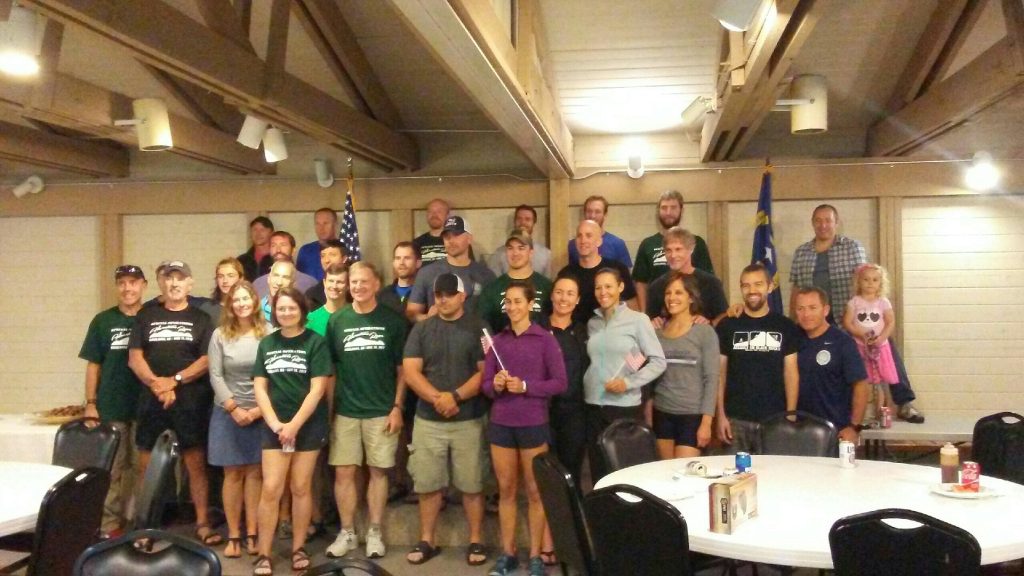
Race participants and board members came together for a group photo.
One of the most astounding attributes of the race’s tradition is the driving force behind it. In the last 16 years, SOAR of Western North Carolina has raised and donated 100% of its proceeds, which is now over $550,000, to the Special Operations Warrior Foundation. The foundation is a charity that provides college scholarships for the children of Special Operations military personnel who are killed in the line of duty. By partaking in the race, the athletes contribute a great to giving back to the families of our nation’s toughest warriors. Founded by Air Force Colonel, Buck Trott who has since passed away, the race lives on as his legacy and continues to enrich the lives of many military families.
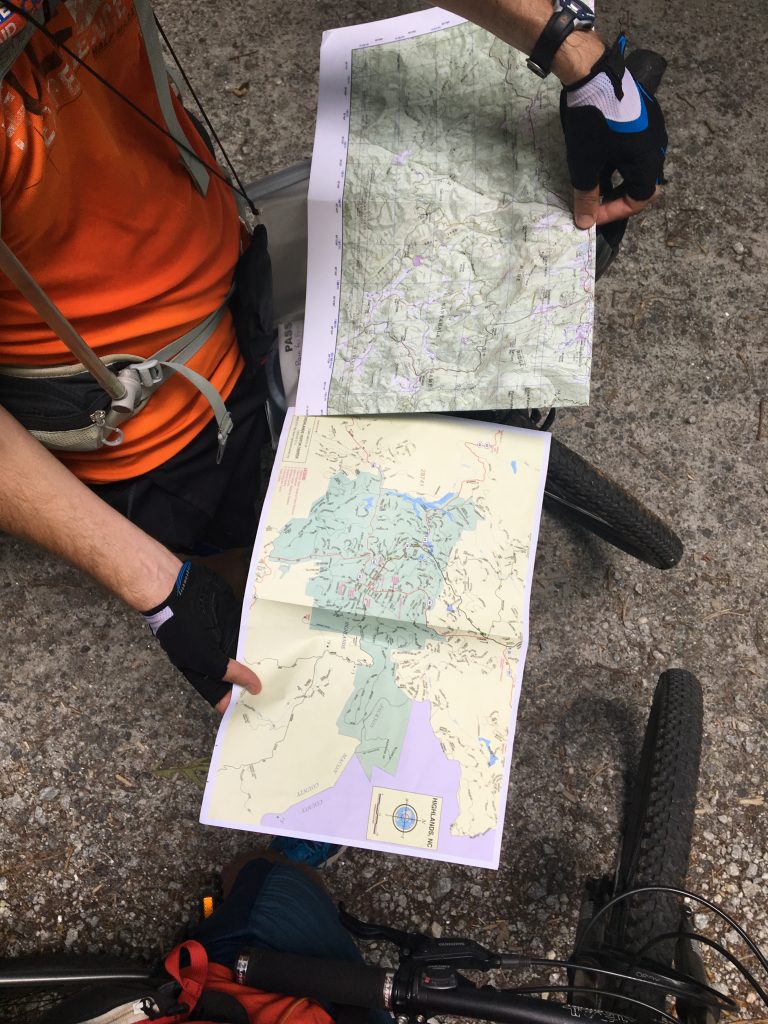
Hinton and Virtue look to their maps during the mountain biking section of their journey. Photo by Jay Hinton
This year’s edition of SOAR was redesigned to make strategy a key component of the racing experience. Adding the unique challenge of orienteering to the mix, racers depended on a map to navigate their way from checkpoint to checkpoint in the unfamiliar terrain as they raced against the clock. With options of the 6 hour sprint race or the 12 hour elite race, the racers were put through the disciplines of mountain biking, running, paddling, and a 80-90 foot rappel.
Racers were able to compete as soloists or teams of 2, 3, or 4 in male, female, and co-ed divisions. With a neat twist, the race included an optional two checkpoint “litter bonus” where teams who collected and brought back 10 pieces of litter would gain points for taking care of the environment around them.
The terrain was split into three sections in which racers could choose to attack in any order, but with one catch. Once they returned to the transition area (where different types of gear could be kept) after leaving a section, the racers could not return to the same section to attempt to reach more checkpoints to add to their passport that is kept with them as a tally.
The checkpoints throughout the race were found in unique forms throughout the race that the individuals or teams would have to show evidence of when they returned to the transition area. The checkpoints ranged from writing something on the back of a stop sign to finding a particular grave and finding the birthdate from the headstone down. The passports showed which checkpoints the racers had reached and was used to tally up a point system that created the rankings of the teams… that is if they made it in time without being disqualified.
Even the fastest runner out there was at risk of being disqualified as the race did not only require speed, but more so a combination of skills and decision making.
“You can win the race without being the best athlete. It is all about a balance of time management, strategy and knowing the landscape,” said Drew Virtue, top finisher in the men’s team division for his second year with race partner, Jay Hinton.
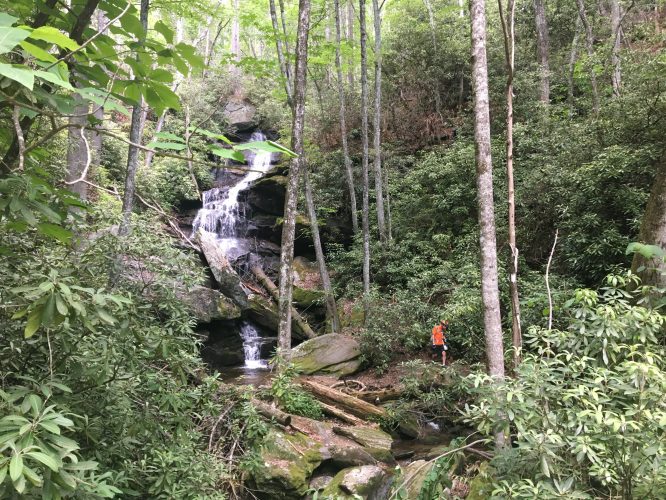
A waterfall along the course served as a checkpoint area. Photo by Jay Hinton
Looking back on the race, Virtue explained the journey of the adventure race for their team of two.
The night before the race, there was a mandatory meeting that counted as a checkpoint where maps were given out to the racers. Virtue and Hinton, once returning an hour back to their hometown of Cullowhee, NC stayed up for an hour and a half developing a strategy for the morning’s adventure. Going into the race with a year’s experience under their belts, the two of them had a strategy in mind that they thought would work yet again.
“We had to revamp everything,” said Virtue.
The first section tackled by the men involved running and paddling, two strong suits for them. Returning to the transition area, they stocked up on biking and rappelling gear and once again hit the trail. After a steep decline on the bikes, it was time for the rappel. Taking their time, Virtue and Hinton made it to the bottom where they paused in awe of the team behind them who were military personnel. The two took on the rappell without fear and remarkably fast.
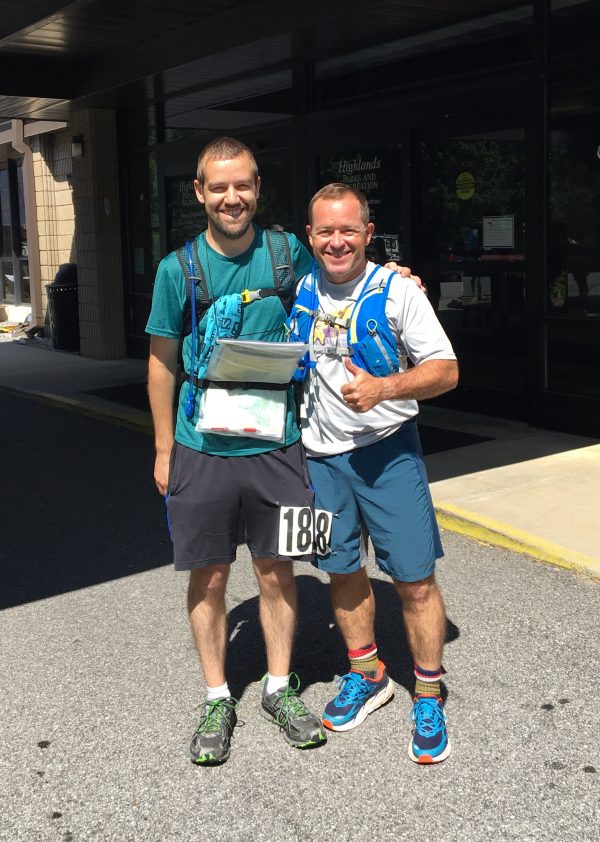
The “Pain for Pints” team of Jay Hinton and Drew Virtue who finished first in the men’s team division for a second year in a row.
As the day went on, their troubles grew as they faced the trials of the southern section where they managed to briefly loose track of their passport and get a bit lost. Being able to stay in good spirits and work together got the two back on track though, and just in time. Winning first place by a margin of just three points, Hinton and Virtue, better known by their team name, “Pain for Pints” made it to the finish line where they celebrated with beer and food. The two beer buds first thought about doing an adventure race like SOAR while each drinking a pint together and just so, the team name was born.
Showing true camaraderie and teamwork paid off for them after a full day of pushing their bodies to the limit. When asked if they plan to return the answer was simple- oh yeah!
Not only do the guys plan to return, but they plan to take the step up to the elite 12 hour race this time next year. Their training motivation is simply “108”. It is the number of points both the male and co-ed winning teams reached at the end of the elite race.
“The winning teams ended up doing about 70 miles of mountain biking, running, and canoeing, with about 6 thousand feet of elevation gain,” said Kreuter, who will be race director again next year.
By the end of the day, luckily no incidents occurred. Safety is a top priority for the board members and race director as things like dehydration and getting lost can become dangerous factors. With incredible volunteered service and resources from the Highland Police Department and Macon County EMS, Kreuter explained his sincerest gratitude for their support. Cooler weather, smart racers, and water reserves placed throughout the course helped to prevent many possible issues throughout the morning and afternoon.
With no official decisions made yet in the planning process for next year’s race, Kreuter did allude to a potential change of location.
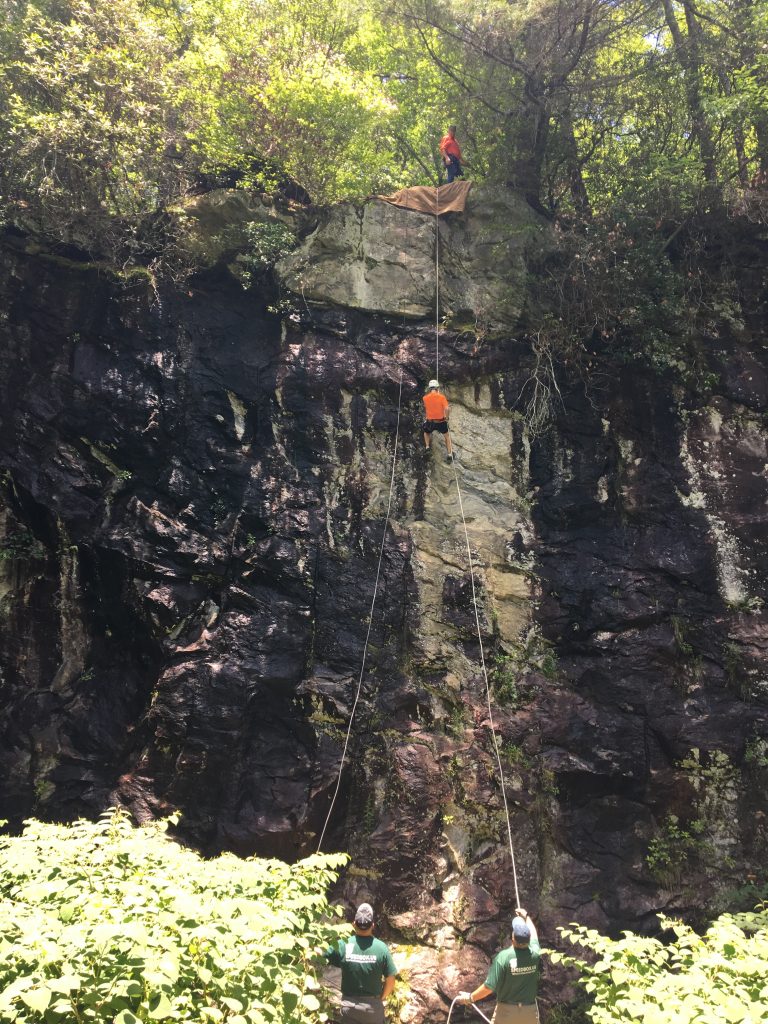
Drew Virtue makes his rappell down the rock face, a crucial step in completing the race.
Photo by Jay Hinton
“The board is considering the possibility of moving the race somewhere nearby so that we can show the racers new terrain and show some of the other wonderful communities in the area.”
For those who may want to race in SOAR next year, the race is a wonderful opportunity for novices as the board behind the race takes pride in creating a racing atmosphere that is approachable for new teams but also challenging for experienced teams.
Putting these words into motion, out of the two top finishing teams in the elite 12 hour race- one team was ranked #2 in the country while the other team had never completed a race together before. Amongst the race’s accalades, its 12 hour race served as a regional qualifier for the USARA National Championships for the first time in its 16 years.
Showcasing an appreciation for our military, emphasis on teamwork, and the beautiful mountains of Western North Carolina, the Special Operations Adventure Race will definitely return in 2018 and is sure to be better than ever. For the full results of each of the race’s divisions, you can go to the SOAR website.


